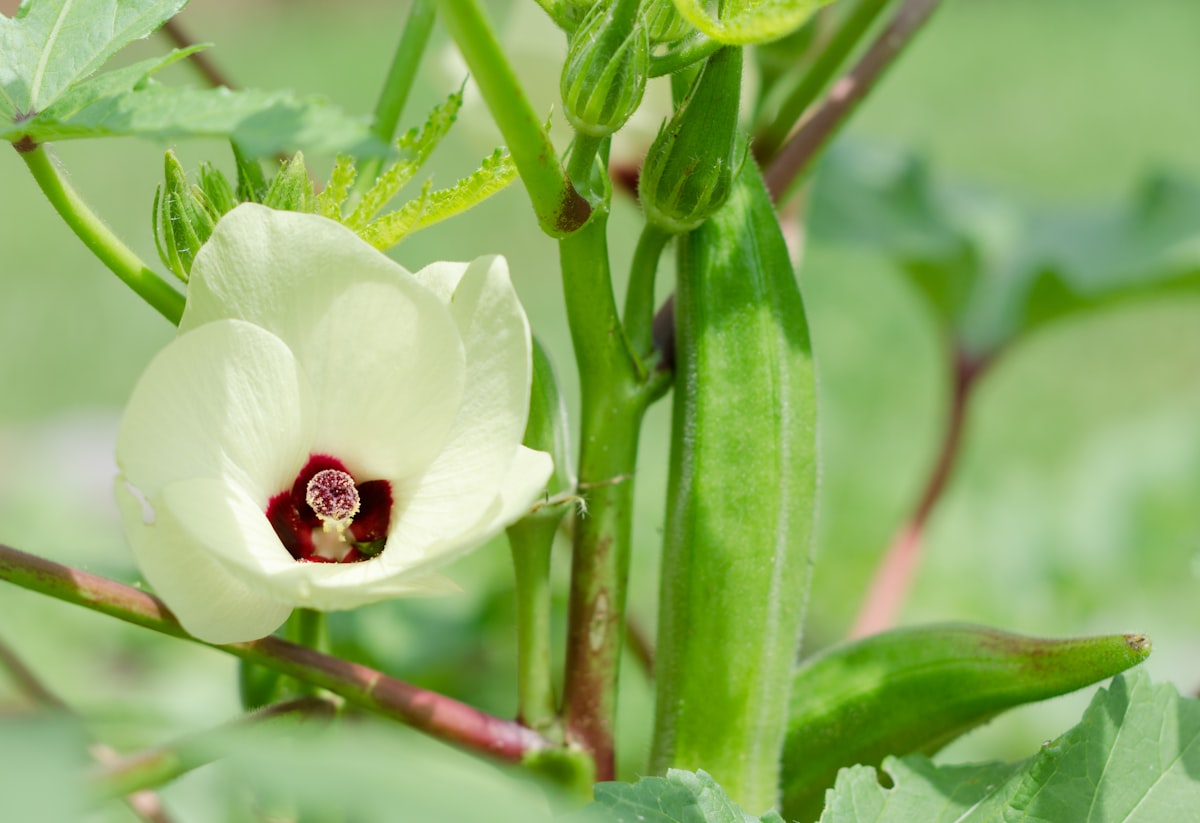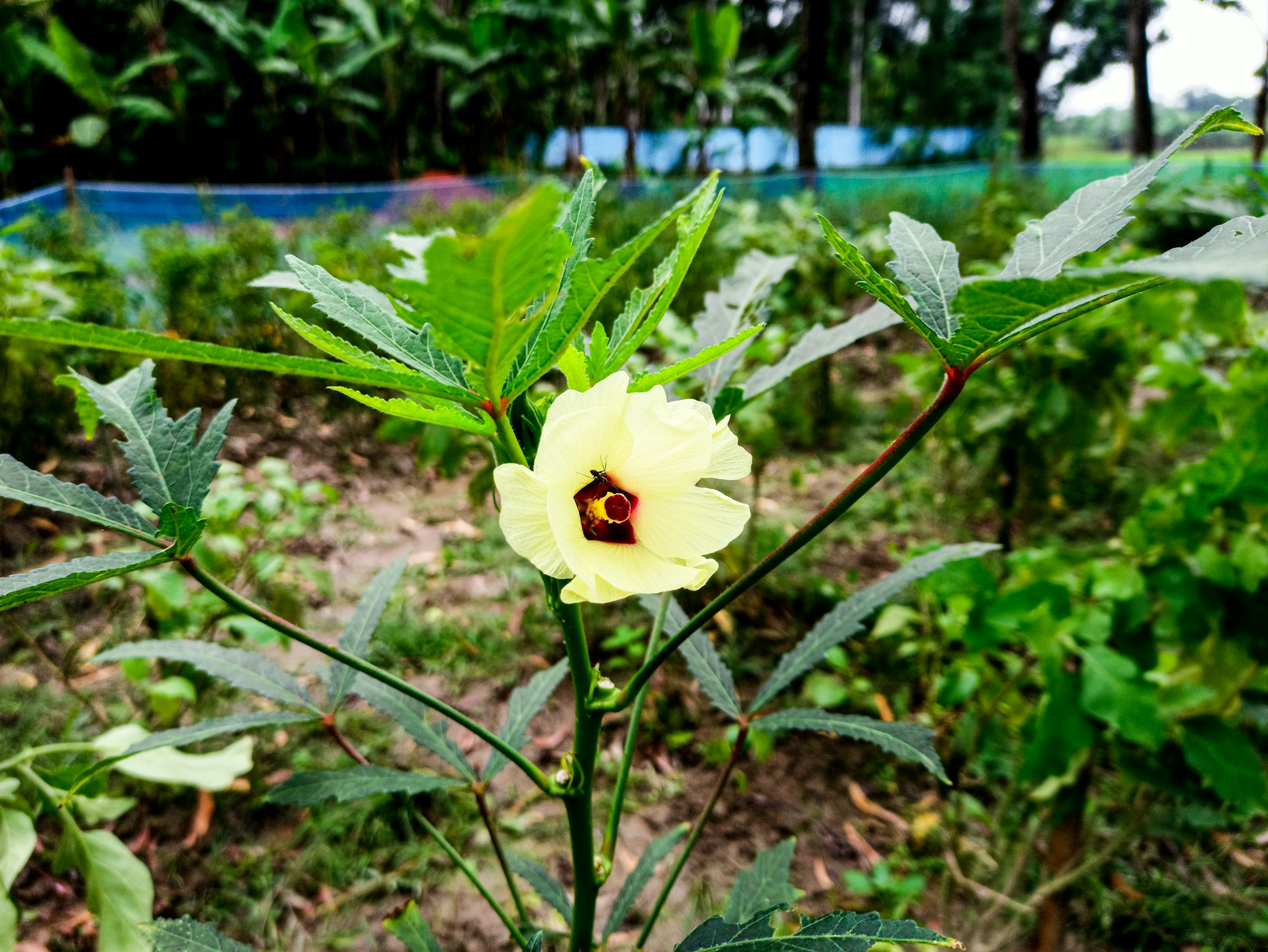How to Grow Okra
Growing okra can be a rewarding experience, as it is an essential ingredient in many Southern dishes.

Table of Contents
With its tall, branching growth habit and beautiful yellow or white flowers, the okra plant is also visually appealing in your garden.
To ensure a successful okra harvest, it is crucial to plant the seeds at the right time, care for the plants diligently, and pick the pods before they become overripe.
Following the necessary steps and guidelines, you can enjoy an abundant crop of okra and its delightful flavors throughout the season.
About Okra Plant
Okra, also known as Abelmoschus esculentus, is an annual vegetable plant native to Africa and Asia.
It belongs to the mallow family, Malvaceae, and comes in various colors, including green, red, and burgundy.
This versatile plant serves both edible and ornamental purposes due to its different varieties, such as dwarf and ornamental types.
Okra plants can reach various heights and resemble hibiscus, another member of the Malvaceae family.
They are known for their hardiness and disease resistance, thriving in warm climates and providing a bountiful crop throughout the summer.
Growing Okra
To grow okra from seed, plant the seeds directly in your garden in early spring, after the last frost, when the soil temperature doesn't dip below 55 degrees Fahrenheit.
If you live in a region with short growing seasons, start the seeds indoors in biodegradable pots three to four weeks before the last projected frost date.
Choose a location with full sun exposure and prepare the soil by adding compost to create a fertile, well-drained foundation.
Space the seeds or seedlings 12-18 inches apart, giving them room to branch out.
If you prefer to grow okra in containers, transplant the seedlings once they are a few inches tall, ensuring the container is well-draining.
As okra is a warm-weather plant, it provides adequate warmth and maintains moist soil throughout the growing process.

Caring for Okra Plant
Sun and Temperature
Place your okra plants in areas with full sun exposure, receiving at least six hours of direct sunlight daily.
These plants thrive in warm climates where evening temperatures remain around 60°F.
Water and Humidity
Okra enjoys moderate watering, so keep the soil evenly moist throughout their growing season.
However, avoid overwatering to prevent soggy soil from hindering their growth.
Soil
Plant your okra in well-draining, rich soil mixed with compost or organic matter.
Although okra can tolerate sandy or clay-based soils, it performs best in soil with a neutral pH.
Fertilizer
Supply your okra plants with nutrients by applying a well-balanced fertilizer or compost to the soil, focusing on nitrogen for optimal growth.
Maintain a regular feeding schedule throughout the growing season to support their development.
Repotting
If you're growing okra in containers, ensure they have enough space.
Prepare to repot and transplant okra plants into larger pots to accommodate their increasing root systems.
Pruning and Propagation
Pruning okra plants can help maintain their size and encourage branching, while removing dead or damaged leaves enhances overall health.
To propagate okra, collect seeds from mature pods and store them in a cool, dry place for the following growing season.
Troubleshooting Plant Problems
Growing Problems
To tackle germination issues, pre-soak seeds in water for 24 hours before sowing.
If flowers fall out due to lack of pollination, hand-pollinate using a toothbrush, avoiding chemicals that repel pollinators.
Opt for consistent watering and ensure well-drained soil to avoid waterlogged conditions.
Pests and Diseases
Common pests include aphids, corn earworms, and whiteflies; control them with neem oil or insecticidal soap.
Powdery mildew and Fusarium wilt are common diseases affecting okra plants.
Manage these conditions by rotating crops, keeping the garden free of plant debris, and applying copper spray every 7-10 days.
Companion Planting
Enhance okra growth and ward off pests by planting them alongside beneficial companions such as eggplant, tomatoes, and cucumbers.
These plants promote a healthier ecosystem and maximize available space, ensuring optimal yield for your okra plants.
Conclusion
When it's time to harvest your okra, wear gloves, as the spines on the pods can irritate.
Harvesting okra should be done when the pods are 2-4 inches long for the best taste and tenderness.
Okra is a versatile vegetable and can be enjoyed fresh or cooked in various dishes.
Whether adding it to gumbo or stews, frying it, or even enjoying it pickled, okra is a delicious and nutritious addition to your garden.
Frequently Asked Questions
How long does it take to grow okra from seed?
Okra seeds typically take 12 to 14 days to germinate. After germination, it can take anywhere from 48 to 75 days for okra plants to mature, depending on the variety.
What is the ideal spacing for okra plants?
Plant okra seeds 1 inch deep and place them every 4 to 8 inches to allow optimal growth.
This spacing will ensure the plants have enough room to grow and produce healthy pods.
Which companion plants work well with okra?
Some good companion plants for okra include sunflowers, tomatoes, basil, and peppers.
These plants can improve the overall health of your okra plants and may help deter pests naturally.
What month is best to plant okra?
The best time to plant okra seeds is 3 to 4 weeks before the last spring frost date.
If planting in your garden, you can cover the plants with a cold frame until the weather warms up.
How much okra can one expect per plant?
Each okra plant can produce multiple pods per week for around 10 to 12 weeks or until weather conditions become too cold.
The total yield per plant can vary depending on the variety and growing conditions.
Does okra regrow annually?
In warm climates (zones 10-12) with no frosts or freezes, okra is a perennial vegetable that can grow year-round.
However, in most regions, it is grown annually and will need to be replanted each year.


